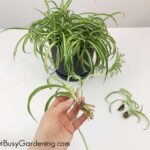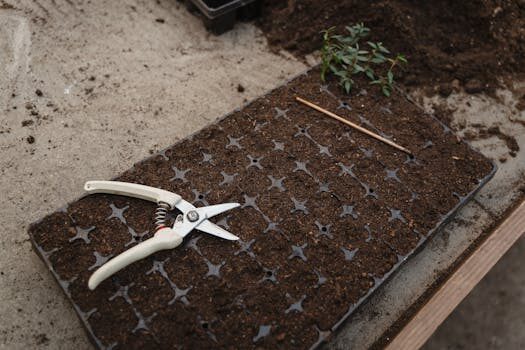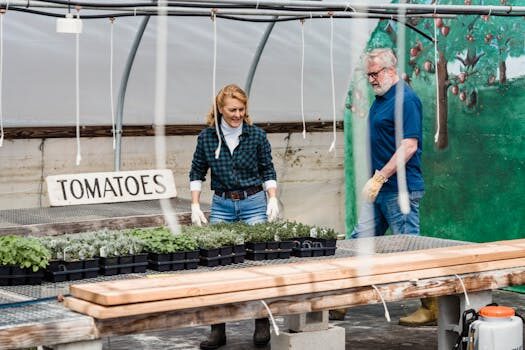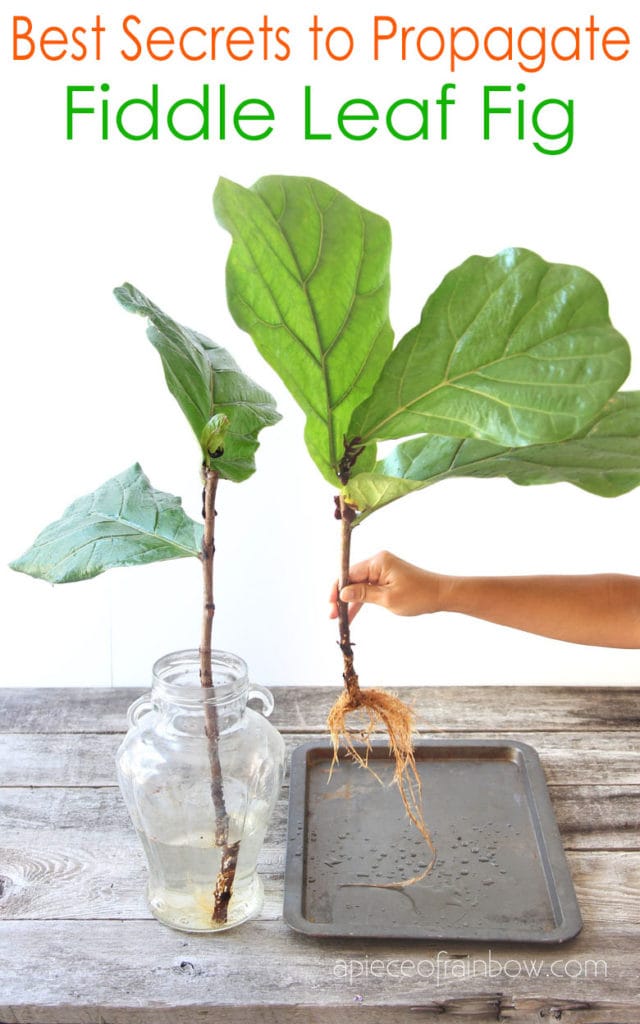If you’re charmed by the lush, violin-shaped leaves of the fiddle leaf fig, you’re not alone. These trendy plants not only add a touch of green elegance to your home but can also be propagated quite easily. In this guide, we’ll share expert tips on fiddle leaf fig propagation, helping you to grow your indoor jungle without spending a dime.
Whether you’re a seasoned indoor gardener or just starting out, our advice will help you successfully clone your fiddle leaf fig. With a bit of patience and the right know-how, you’ll soon be rewarded with new, thriving plants ready to beautify your space.
How to Propagate a Fiddle Leaf Fig in 6 Easy Steps?
Propagating this beloved houseplant might seem daunting, but it can be broken down into six simple steps. These steps will guide you through the process from selecting a cutting to planting a new fiddle leaf fig.
The first step involves choosing a healthy and mature branch. Look for a stem that’s at least a few inches long with several leaves. Using sharp, sterilized shears, make a clean cut just below a leaf node. The node is where the new roots will sprout, so its integrity is crucial.
Next, remove the bottom leaves to expose the node and place the cutting in a container of water, ensuring the node is submerged. Place the container in bright, indirect light and wait for roots to grow, changing the water weekly.
Once the roots are a few inches long, usually after several weeks, it’s time to transfer the cutting to soil. Prepare a pot with well-draining soil and plant the rooted cutting. Water it thoroughly and place it back in indirect light.
Finally, maintain a consistent watering schedule, allowing the soil to dry out a bit between waterings. With some patience and care, your new fiddle leaf fig will start to grow, offering a satisfying testament to your propagation efforts.

What Is the Best Time to Propagate Fiddle Leaf Figs?
The optimal time for fiddle leaf fig propagation is during the warmer months of spring and summer. This is when the plant is in its active growth phase and can recover and root more efficiently.
 Spider plant propagation: simple tips for getting new plants for free
Spider plant propagation: simple tips for getting new plants for freePropagating during this time increases the chances of success, as the warmer temperatures and increased daylight support the development of new roots. However, it’s still possible to propagate during other times of the year; just be aware that it might take longer for roots to form.
How Long Does It Take to Root Fiddle Leaf Fig Cuttings?
The rooting process for fiddle leaf fig cuttings can vary based on several factors including the environment and the size of the cutting. Typically, you can expect roots to start forming within 2-4 weeks.
To ensure the best results, keep the water fresh and maintain a warm temperature around the cutting. Strong roots are crucial for a healthy new plant, so give them the time they need to develop before transplanting to soil.
What Tools Are Essential for Successful Fiddle Leaf Fig Propagation?
- Sharp pruning shears: To make clean cuts that will heal well and root quickly.
- Sterilizing agent: Such as rubbing alcohol, to prevent infection and disease.
- Containers: For rooting the cuttings in water or directly in soil.
- Rooting hormone: This can stimulate root growth, although it’s optional.
- Well-draining soil: To provide the best environment for newly rooted cuttings.
Using these tools correctly can greatly increase the chances of your propagation efforts being successful.
How to Propagate Fiddle Leaf Figs by Taking Cuttings?
Taking cuttings is a popular fiddle leaf fig propagation technique. Start by selecting a healthy portion of the plant, ideally with a few leaves and a node. Cut this section off cleanly and place it in water or soil to root.
Make sure the environment is warm and that the cutting receives plenty of indirect sunlight. Rooting can take a few weeks, but once the roots have developed, plant the cutting in a pot with proper soil and continue to care for it as you would a mature fiddle leaf fig.

Is It Possible to Propagate Fiddle Leaf Fig From A Single Leaf?
While it’s a common question, propagating a fiddle leaf fig from a single leaf is often unsuccessful. The leaf may root, but it’s unlikely to produce a new stem and grow into a full plant.
For the best chances of successful propagation, use a stem cutting with at least one intact leaf node. This node is where the new roots and eventually a new stem will emerge.
 Christmas cactus propagation: get more festive plants for free tips and tricks
Christmas cactus propagation: get more festive plants for free tips and tricksNow, let’s dive into some of the most frequent questions plant enthusiasts have about fiddle leaf fig propagation.
Related Questions on Fiddle Leaf Fig Propagation
How to Propagate a Fiddle Leaf Fig in Water?
To propagate in water, start by taking a cutting with a node and leaf attached. Place the cutting in a container filled with water, ensuring the node is submerged. Change the water weekly and keep the cutting in indirect sunlight until roots form.
Once the roots are a few inches long, you can transfer the cutting to soil. Be sure to acclimate it gradually to avoid transplant shock, and then continue with regular fiddle leaf fig care.
How Long Does It Take to Propagate a Fiddle Leaf Fig?
The time it takes for a fiddle leaf fig cutting to root can vary. In water, roots typically begin to appear within 2-4 weeks. However, the time can differ based on factors like water temperature, the season, and cutting size.
Patience is key. Give your cutting the time it needs to develop strong roots before moving it to soil for the next stage of growth.

When Is the Best Time to Propagate Fiddle Leaf Figs?
The best time to propagate fiddle leaf figs is in the spring and summer when the plant is actively growing. This period provides the ideal conditions for cuttings to root and ultimately thrive.
While you can propagate year-round, cuttings taken in cooler months may take longer to root and require more attention to maintain an optimal environment for growth.
How Do You Air Layer to Propagate Fiddle Leaf Figs?
Air layering is a more advanced propagation method that involves wounding the stem and wrapping it with moist moss to encourage root growth while still attached to the mother plant.
 Swiss cheese plant care and growing tips: expert advice
Swiss cheese plant care and growing tips: expert adviceOnce roots are visible, the new section can be cut from the parent plant and potted separately. This technique can be particularly useful for larger plants or when a water-rooting approach isn’t feasible.
Enjoy your gardening adventure as you use these techniques to propagate your fiddle leaf figs. With the right care and a little patience, you’ll be able to expand your collection and share the joy of these elegant plants with friends and family.


This is such a great guide for anyone looking to expand their plant collection without breaking the bank! I love how you break down the propagation process into simple steps. It makes the whole idea of cloning my favorite fiddle leaf fig feel totally doable. Thanks for the tips on timing and tools too—I’m definitely going to try this out during the next warm season!